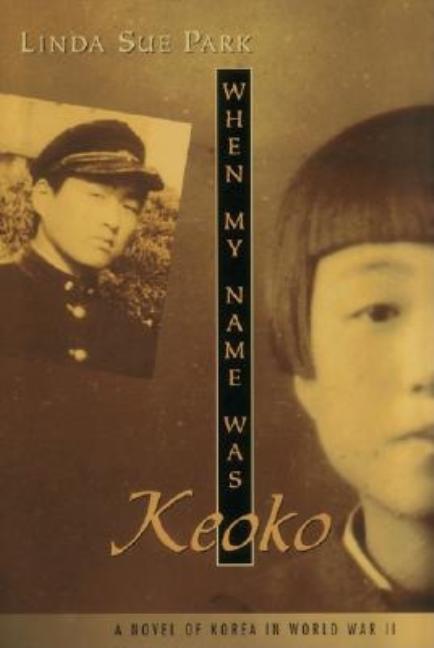Book Descriptions
for When My Name Was Keoko by Linda Sue Park
From Cooperative Children's Book Center (CCBC)
Growing up in occupied Korea during World War Two, Kim Sun-hee is ten years old when she learns that she and her family, like all Koreans, must take new Japanese names. Overnight she becomes Kaneyama Keoko and her 13-year-old brother, Tae-yul, becomes Nobuo. This is just the latest in a long string of new laws aimed at suppressing Korean culture. Already Sun-hee has excelled in Japanese at school where speaking, writing, and reading Korean is forbidden, to such an extent that she is sometimes called chin-il-pa (lover of Japan). Spanning the years between 1940 and 1945, the story unfolds in the alternating points of view of Sun-hee and Tae-yul, who respond quite differently to the same events. Whereas Tae-Yul wants to follow in the footsteps of their politically subversive uncle who works for the underground, Sun-Hee tries to follow the example set by her scholarly father, quietly subversive in his own right as he struggles to maintain a Korean identity for his family. Winner, CCBC Newbery Award Discussion; Honor Book, CCBC Printz Award Discussion (Ages 11-14)
CCBC Choices 2003 . © Cooperative Children's Book Center, Univ. of Wisconsin - Madison, 2003. Used with permission.
From The Jane Addams Children's Book Award
Set during the Japanese occupation of Korea during World War II, the story is told in the alternating voices of Sun-hee, 10-years-old, and her 13-year-old brother, Tae-yul. The clash of cultures resonates throughout as Koreans are forbidden not just their possessions, but their names. Confronted with issues of trust and identity, Sun-hee asks, "Could Korean thoughts be written in Japanese?" Meanwhile, her brother determines to risk his life to prove his masculine honor.
The Jane Addams Children's Book Award: Honoring Peace and Social Justice in Children's Books Since 1953. © Scarecrow Press, 2013. Used with permission.
From the Publisher
A heartwarming tale of courage, resilience and hope from master storyteller and winner of the prestigious Newbery Medal, Linda Sue Park. When her name was Keoko, Japan owned Korea, and Japanese soldiers ordered people around, telling them what they could do or say, even what sort of flowers they could grow. When her name was Keoko, World War II came to Korea, and her friends and relatives had to work and fight for Japan. When her name was Keoko, she never forgot her name was actually Kim Sun-hee. And no matter what she was called, she was Korean. Not Japanese. Inspired by true-life events, this amazing story reveals what happens when your culture, country and identity are threatened.
Publisher description retrieved from Google Books.


